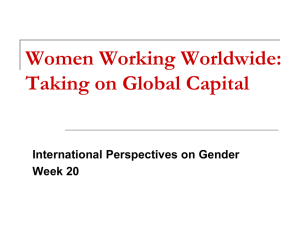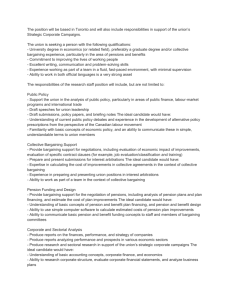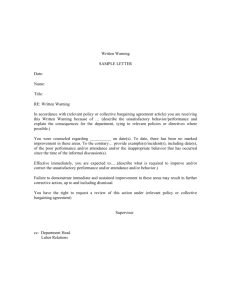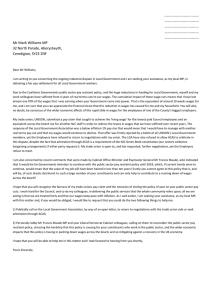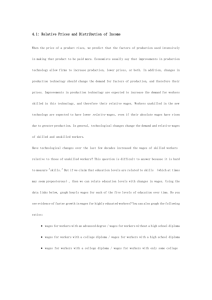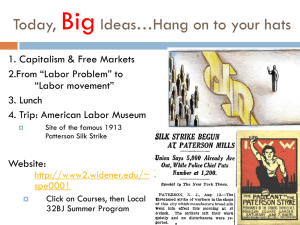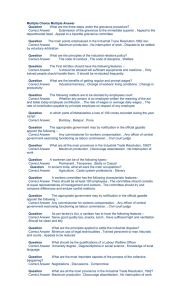File - Stephanie Kramer's Portfolio
advertisement
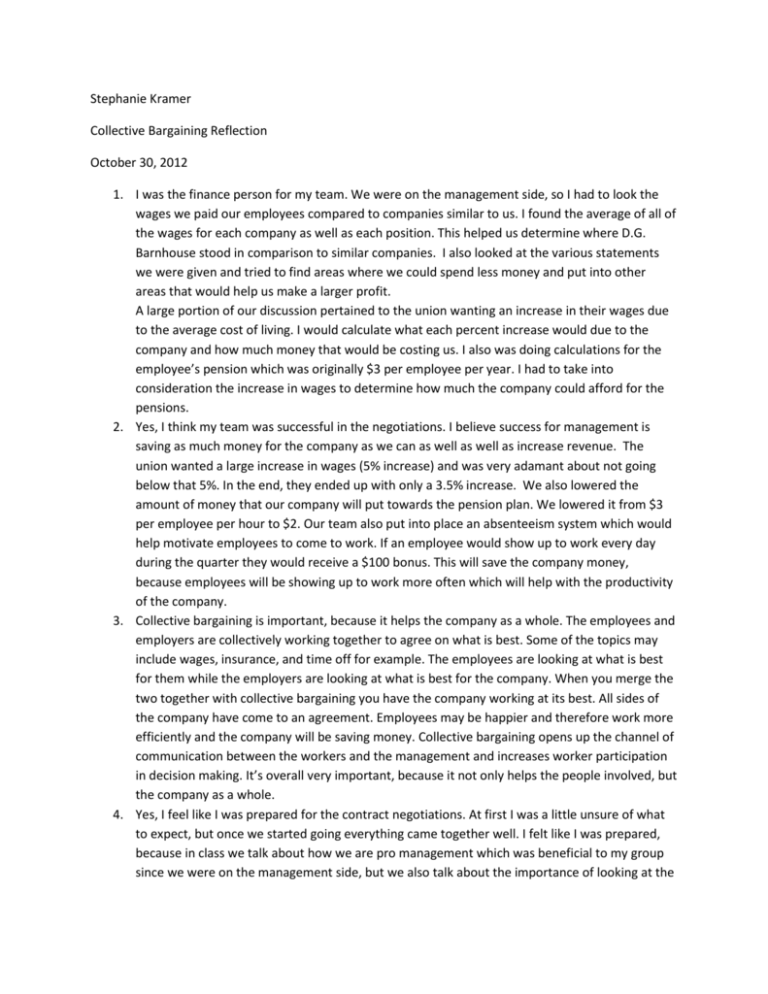
Stephanie Kramer Collective Bargaining Reflection October 30, 2012 1. I was the finance person for my team. We were on the management side, so I had to look the wages we paid our employees compared to companies similar to us. I found the average of all of the wages for each company as well as each position. This helped us determine where D.G. Barnhouse stood in comparison to similar companies. I also looked at the various statements we were given and tried to find areas where we could spend less money and put into other areas that would help us make a larger profit. A large portion of our discussion pertained to the union wanting an increase in their wages due to the average cost of living. I would calculate what each percent increase would due to the company and how much money that would be costing us. I also was doing calculations for the employee’s pension which was originally $3 per employee per year. I had to take into consideration the increase in wages to determine how much the company could afford for the pensions. 2. Yes, I think my team was successful in the negotiations. I believe success for management is saving as much money for the company as we can as well as well as increase revenue. The union wanted a large increase in wages (5% increase) and was very adamant about not going below that 5%. In the end, they ended up with only a 3.5% increase. We also lowered the amount of money that our company will put towards the pension plan. We lowered it from $3 per employee per hour to $2. Our team also put into place an absenteeism system which would help motivate employees to come to work. If an employee would show up to work every day during the quarter they would receive a $100 bonus. This will save the company money, because employees will be showing up to work more often which will help with the productivity of the company. 3. Collective bargaining is important, because it helps the company as a whole. The employees and employers are collectively working together to agree on what is best. Some of the topics may include wages, insurance, and time off for example. The employees are looking at what is best for them while the employers are looking at what is best for the company. When you merge the two together with collective bargaining you have the company working at its best. All sides of the company have come to an agreement. Employees may be happier and therefore work more efficiently and the company will be saving money. Collective bargaining opens up the channel of communication between the workers and the management and increases worker participation in decision making. It’s overall very important, because it not only helps the people involved, but the company as a whole. 4. Yes, I feel like I was prepared for the contract negotiations. At first I was a little unsure of what to expect, but once we started going everything came together well. I felt like I was prepared, because in class we talk about how we are pro management which was beneficial to my group since we were on the management side, but we also talk about the importance of looking at the employee side as well. You can’t just focus on management, because if your employees aren’t happy then the company won’t run as efficient as it could. 5. I overall had a good experience with the simulation. I thought it was great that you brought in people who are more familiar with the topics since they deal with it at their jobs. It helped us put into perspective the things we were coming up with. They helped us get a look at the union side of things to help us make the best decisions. The only thing that I would change about it is having more background information on some of the topics. I know my group talked about pensions and health insurance which are topics that I am not very familiar with. I think if we could have talked in class about the different issues that we were going to discuss that would have made us a little more knowledgeable on the issues. Other than that I had a good experience with the simulation and learned a lot from this exercise.


![Labor Management Relations [Opens in New Window]](http://s3.studylib.net/store/data/006750373_1-d299a6861c58d67d0e98709a44e4f857-300x300.png)

